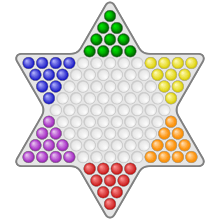121 (number)
| ||||
|---|---|---|---|---|
| Cardinal | one hundred twenty-one | |||
| Ordinal |
121st (one hundred and twenty-first) | |||
| Factorization | 112 | |||
| Divisors |
1, 11, 121 121 | |||
| Roman numeral | CXXI | |||
| Binary | 11110012 | |||
| Ternary | 111113 | |||
| Quaternary | 13214 | |||
| Quinary | 4415 | |||
| Senary | 3216 | |||
| Octal | 1718 | |||
| Duodecimal | A112 | |||
| Hexadecimal | 7916 | |||
| Vigesimal | 6120 | |||
| Base 36 | 3D36 | |||
121 (one hundred [and] twenty-one) is the natural number following 120 and preceding 122.
In mathematics
One hundred [and] twenty-one is a square and is the sum of three consecutive primes (37 + 41 + 43). There are no squares besides 121 known to be of the form , where p is prime (3, in this case). Other such squares must have at least 35 digits.
There are only two other squares known to be of the form n! + 1, supporting Brocard's conjecture. Another example of 121 being of the few examples supporting a conjecture is that Fermat conjectured that 4 and 121 are the only perfect squares of the form x3 - 4 (with x being 2 and 5, respectively).[1]
It is also a star number and a centered octagonal number.

In base 10, it is a Smith number since its digits add up to the same value as its factorization (which uses the same digits) and as a consequence of that it is a Friedman number (11^2). But it can not be expressed as the sum of any other number plus that number's digits, making 121 a self number.
In other fields
121 is also:
- The electricity emergency telephone number in Egypt
- The number for voicemail for mobile phones on the Vodafone network[2]
- The undiscovered chemical element Unbiunium has the atomic number 121
- The official end score for Cribbage[3]
See also
- List of highways numbered 121
- United States House of Representatives House Resolution 121
- United Nations Security Council Resolution 121
References
- ↑ Wells, D., The Penguin Dictionary of Curious and Interesting Numbers, London: Penguin Group. (1987): 136
- ↑ Vodafone, Calling and messaging
- ↑ Rule 1.1, American Cribbage Congress, retrieved 6 September 2011